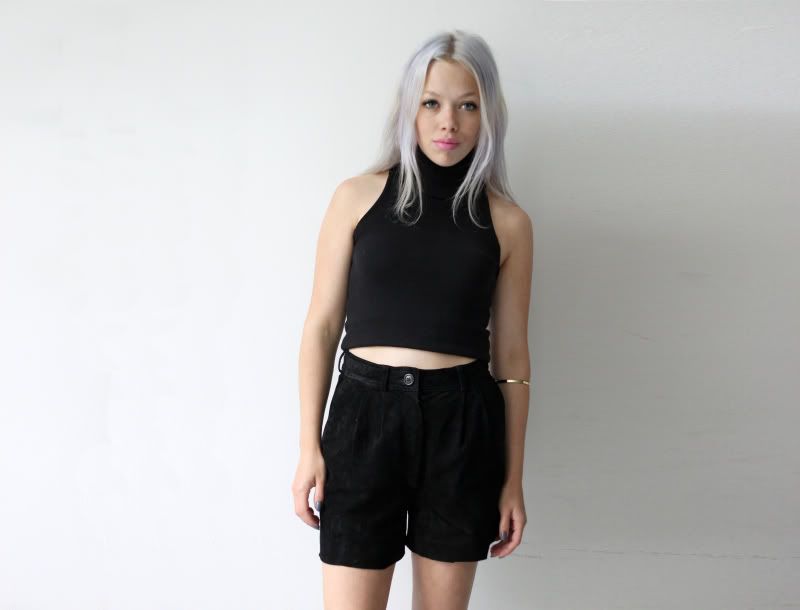

I'd like to re-post an article that I earlyer shared last November.
For some time now I've been inspired by the thought of underdressing instead of overdressing and images from the 1990s; Kate Moss in a floorlength white tank dress, hair combed back, no make up. T-shirts are my favorite garments, but this morning they bored me. I craved something even more closed and block-like than a tee. Nothing-to-wear moments always lead to a DIY
instructions: Snip Snap, off with the sleeves.
______________________________________________________________
Much Ado About (Nearly) Nothing
By Amy M. Spindler
New York Times, June 13, 1993
Minimalism is as noncommittal as fashion gets without leaving a body naked.
At its best, minimalist fashion is like Mission-style oak furniture: inviting, architectural, sturdy, elegant. At worst, it's plain. It can put demands on the wearer. It won't inspire your friends to apply adjectives to you that you couldn't inspire alone. A minimalist dress is the only $2,000 one that you might wear to meet the Dalai Lama without feeling obscene.
What sets the minimalists on this page above the rest is their deceit and their conceit. Deceit because these clothes look so simple but can in fact be the most difficult: many are cut on the bias (diagonlly, across the grain of the fabric). The bias cut makes them drape. The conceit is the richness of the fabric. There is nothing plain about chiffon backed with silk, or cashmere woven into the rib knit of a sweater.
Minimalism is best described not by what it is, but by what it lacks. There's no lace. No tulle. No fringe. No flouncy tiers. No rows of pleats. For those who subscribe, it is defined the way obscenity ofter is: they know it when they see it.
0 comments:
Post a Comment